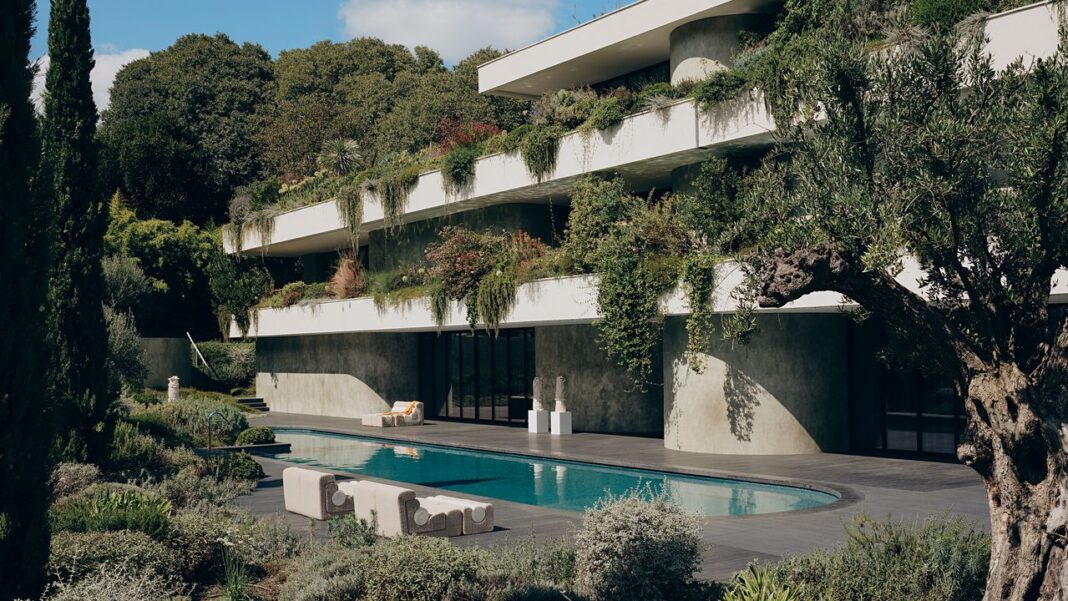In this cave-like home, furniture and artworks exist in an intimate relationship with the landscape, erasing the boundaries between inside and outside. “For me, the real border is more than the windows: it’s the curtains that sway in the wind,” Levy says. This hints at the poetry of this contemporary house, where the building and its vegetation form a whole, creating a tension between a refined, radically geometric expression and the exuberance of nature. It’s an abstract interpretation of vernacular architecture: The retaining walls are made of concrete clad in stone, faithful to the architecture of the Gard region in that they are linked to the terrain, making the villa a distinct object, carefully inserted into its setting.
Inside, the same brushed Hainaut blue stone is used for the floors, while the aqueous green walls and white ceilings are paired with arches in polished black Corian. These arches open onto the living room and its slightly rounded wall, which Levy imagines as extending an invitation to walk along it and to touch it. The arches also open up vistas as one strolls the property, like vaulted passages. “Corian marks transitions and circulation. When you go from one view of the garden to the next, from one area of light to another, you pass through these dark vaults. These are spaces that exist between two different universes, like interludes. They are also a way of showing that we’re crossing through these volumes, because the structure of this project is made up of pierced masses and large voids.” Corian is an unusual material with its irregularities that are the result of the thermoforming process. It is glossy and polished but, unlike lacquer, it retains imperfections that give its surface an almost aquatic feel. “Holding the Corian handrail to climb into the rooms is a sensory experience,” Levy says.

